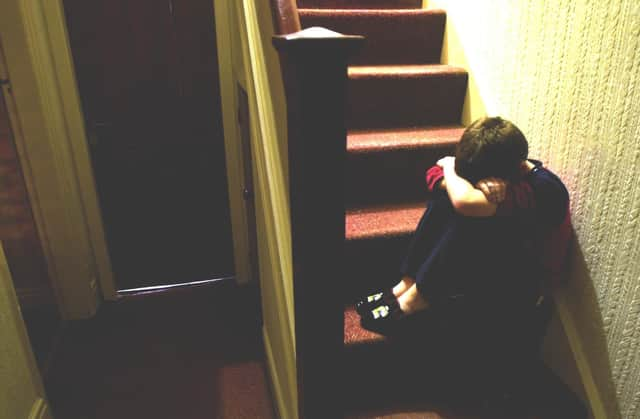Boys who are sexually abused invisible to services, Scottish report finds


New research by the Scottish Children’s Reporter Administration (SCRA) and Barnardo’s Scotland concluded there is a “cultural barrier” to professionals recognising potential risk of sexual abuse with boys.
The study, the first national research into child sexual exploitation in Scotland, also reveals an “unacceptable” culture of victim blaming with attitudes towards behaviours of some young people clouding understanding of consent, leading to children and young people often being seen as complicit in their abuse.
Advertisement
Hide AdAdvertisement
Hide AdFrom more than 200 cases, the research found that in Scotland it is girls who are more likely to be recognised as victims. But 80 per cent of boys, compared with 25 per cent of girls, who were likely to have suffered abuse were not identified in official reports as being victims. Researchers said boys’ vulnerabilities to child sexual exploitation (CSE) were not being taken seriously.
While girls are more likely to be victims of sexual abuse, have attempted suicide or self-harmed, boys are more likely to have been exposed to violence and display sexually harmful behaviour than girls, the study found.
However, authors said the reporting of these factors was strongly based on a biased understanding of gender and abuse and warned this understanding of what CSE is and who is affected by it, is leading to a failure to identify certain vulnerable young people, especially boys.
The report reads: "There appears to be a cultural barrier in recognising potential risk of CSE when we are interacting with boys, especially those exhibiting ‘challenging’ behaviours – we do not put two and two together as often. This is despite research evidence clearly showing that challenging and aggressive behaviours, and offending, are often responses to trauma."
Based on the case files held by SCRA of 213 children, the research found child sexual exploitation is happening in islands, rural communities and in urban areas, with cases identified in 27 of Scotland’s 32 local authorities.
For almost half, this abuse started before they were 13-years-old. The youngest was 11-years-old.
Alistair Hogg, head of practice and policy at SCRA, said: “Child sexual exploitation is a particularly hidden form of sexual abuse and crime. Victims may not be aware that they are being sexually exploited, such is the coercive nature of perpetrators and the control they exert over their victims. It is very rare for a child to disclose that they are a victim.
Daljeet Dagon, national programme manager for CSE at Barnardo’s Scotland, said: “We still struggle to identify victims or potential victims due to inconsistencies in reporting, a failure to understand who can be affected by CSE and a reticence to raise concerns.”
Advertisement
Hide AdAdvertisement
Hide AdBarnardo’s Scotland has launched a policy paper, Policy Report: Sexual exploitation of children involved in the Children’s Hearings System, based on key findings from the joint research, offering 15 recommendations for action. Key among them is a call on the Scottish Government to fund research into scale of CSE.
A message from the Editor:
Thank you for reading this article. We're more reliant on your support than ever as the shift in consumer habits brought about by coronavirus impacts our advertisers.
If you haven't already, please consider supporting our trusted, fact-checked journalism by taking out a digital subscription.